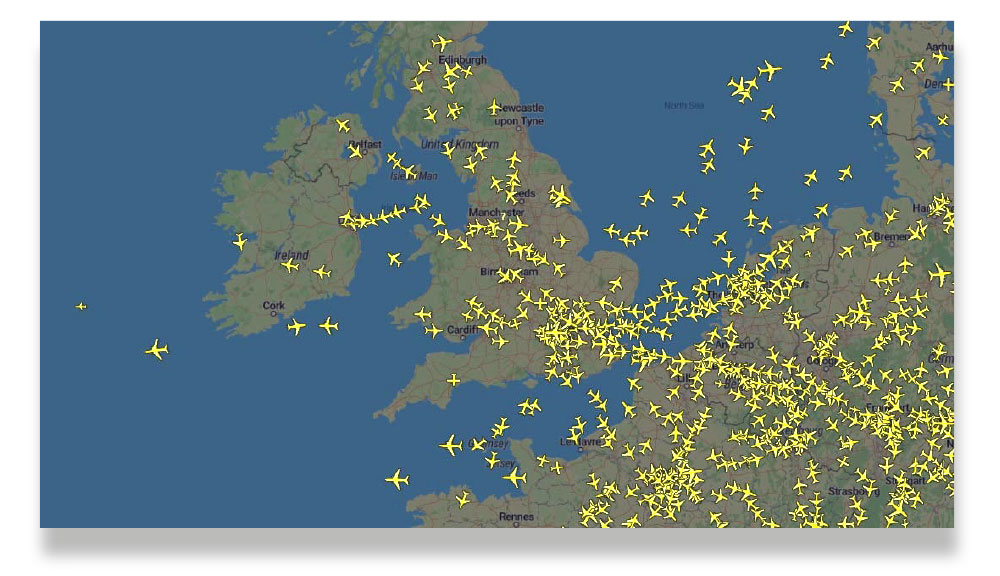


U.S. House Speaker Nancy Pelosi was the first American official to make the highest-level visit to Taiwan since 1997. Almost 3 million people tracked the 7-hour flight of the plane carrying Pelosi from Kuala Lumpur to Taipei. Pelosi's flight, which infuriated China and signaled growing American backing for Taiwan, became the most-tracked flight of all time on FlightRadar24.com. The intensity caused the app to crash from time to time. But were the effects of this flight on the aviation industry limited to the fact that it was the most-tracked live flight?
The plane carrying Nancy Pelosi departed from Kuala Lumpur, the capital of Malaysia, at 15:42 local time on August 2, despite the Chinese government's threat that such a visit “could have grave consequences” given the escalating tensions between the U.S. and China.
The U.S. Air Force’s Boeing C-40C aircraft carrying Pelosi is in fact a Boeing 737 with special military conversion modifications. The C-40C, with the flight number SPAR19, has been the most followed live flight on Flightradar24 since its take-off. The number of users following this historic live flight grew steadily over the course of the flight. 2.92 million users were actively following the seven-hour flight from Kuala Lumpur to Taipei at any given time. When the plane landed in Taipei, 708,000 people were watching those moments live at the same time. The heavy traffic on the FlightRadar24.com website and app caused some technical problems.
Why did SPAR19 Receive So Much Attention?
SPAR19 was a significant flight in world history. It was recorded as the highest U.S. visit to Taiwan in the last 25 years.
Although the visit to Taiwan was not part of Pelosi's official program for her Asia tour, it was confirmed a day before the visit that Pelosi would make a stop in Taiwan. Pelosi's visit to Taiwan was interpreted as a firm declaration to the world that the U.S. "will not abandon" the democratically governed island. Pelosi was welcomed by Taiwan President Tsai Ing-wen in a ceremony broadcast live on TV. Tsai Ing-wen thanked Pelosi for her visit and praised her commitment to democracy. He bestowed upon Pelosi Taiwan's highest civilian honor.
The visit of the U.S. House Speaker further heightened tensions between the United States and China. China condemned Pelosi's visit to Taiwan and threatened military action against the U.S., declaring that such visit was a threat to peace and stability in the Taiwan Strait.
On its flight from Kuala Lumpur to Taipei, the path of House Speaker Nancy Pelosi's plane to Taiwan was notable for how carefully it avoided the South China Sea in case of possible interference by Chinese fighter jets. The plane approached Taiwan from the east.
During the flight, there were allegations that the Chinese military sent fighter jets flying over the Taiwan Strait. During and after the visit, footage of Chinese military drills at the border of Taiwan was shared. Taiwan's Ministry of Defense also announced that 21 Chinese warplanes entered Taiwan's air defense identification zone and then returned to China.
Immediately after Pelosi’s visit, the Chinese military announced that a series of live-fire military drills at six locations around Taiwan would take place. It was also announced that flight and supply chain disruptions were expected due to the military drills. Airlines operating in the Asian region were warned to avoid flights in the Taiwan Strait region. Korean Air, Cathay Pacific and Xiamen Airlines took action to make necessary adjustments to their flights following the airspace restriction. There were no changes to the Istanbul-Taipei flights operated by Turkish Airlines.
How Will Pelosi's Visit Affect Global Aviation?
Taipei Taoyuan Airport was the 11th busiest airport in the world in terms of international traffic prior to the pandemic. However, with quarantine still in place for travelers entering the country, the number of flights landing in Taiwan keeps decreasing. This significantly minimizes the effect of the airspace closure.
Taiwan's airspace, which was prohibited to civilian flights during the exercise, is not very large. For instance, the recent closure of Russian airspace resulting from the conflict with Ukraine has had a significantly greater effect on the global aviation industry.
Numerous airlines are able to conduct many flights over longer routes and for considerably longer periods of time. This leads to higher fuel costs and environmental problems. The closure of Russian airspace causes Finnair's flights between Helsinki and Tokyo to take 4 hours longer than usual. Additionally, some airlines had to stop flying to some routes.
A longer-than-expected continuance of the Chinese military exercise in the Taiwan Strait could increase the extent of the impact on aviation, further disrupting the already slow post-pandemic recovery of the entire region. It might limit people's ability to travel freely. All eyes are now on the U.S. and China. If they continue to escalate the crisis and Chinese pressure on Taiwan increases, it could spark a new turmoil that could require other airspace closures. More civilian flights are impacted by airspace closures around the world. We need politicians to take steps to open closed airspace, not to close it...